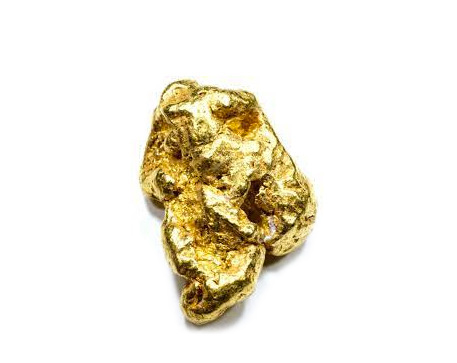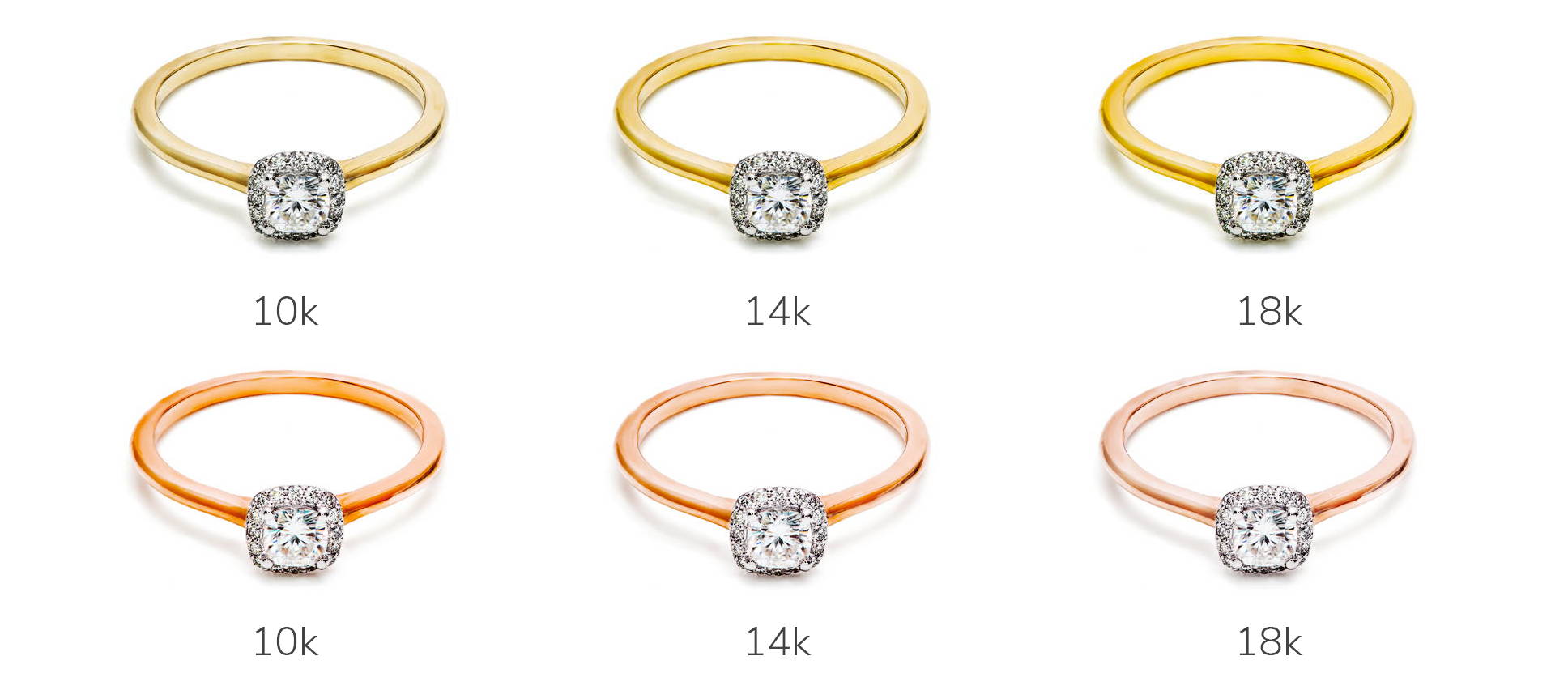
Gold and its carat
Do you know the difference between 10k, 14k and 18k gold?
Caratage is a measure of purity of precious metals such as gold. Its abbreviation varies depending on the language, but in French, we use “ct” or “K” after the number to identify the carat. In jewelry, this classification system makes it possible to establish the proportion of pure gold in an alloy that includes other metals such as copper, silver and zinc (see table). There is no such thing as 100% pure gold, but in the precious metals industry, 24K gold is said to be pure. If our jewelry is made with 10K gold , this means that its purity is 10 parts out of 24. This means that the other 14 parts of its alloy are made up of other metals. 14K and 18K have 14 and 18 out of 24 parts of pure gold, respectively.


Gold nugget
Percentage and precision
If we calculate in percentage, 18K gold is made up of 75% pure gold, 14K gold , 58.5% and 10K gold , almost 42%. Let's now relate everything to weight. If I have 24 grams of gold valued at 10 carats, I therefore have in my hands 10 grams of pure gold. Ultimately, the calculation is simple. You just need to understand it well.
Canadian purity
Even though 100% pure gold does not exist, it was the Royal Canadian Mint 's gold refinery that was the first to purify gold to 99.9%. She reached this figure in 1979 and then exceeded it 3 years later with results of 99.99%. Since 1997, the 5-9 (99.999%) designation has been the highest standard of purity in the entire world, a mark once again established by the Royal Canadian Mint which remains, even today, the only place in the world capable to obtain these results.
A difference to the naked eye
There is a surprising difference between yellow gold and rose gold. The higher the carat of yellow gold, the more vibrant and saturated it appears, while for rose gold, it is quite the opposite. The pink appears paler since there is less copper in the alloy. This distinction can be seen with the naked eye when you place jewelry of different carats next to each other. On the other hand, the distinction is not as marked as what some jewelers would have you believe with their advertising. It is very difficult to guess the carat of a piece of yellow or rose gold jewelry when you cannot compare it. It is easier to look at the hallmark inside the jewelry to find out its carat. As for white gold, the carat has no importance on the shine since the jewelry is treated with rhodium.

The West has made its choice
10K and 14K gold jewelry is very popular in Western countries with a market share of 95%. Price is not the only factor involved. Although their alloy is less pure than 18K, 10K and 14K gold jewelry has the hardness and elasticity to counter deformation and degradation. On the other hand, 18K jewelry gold represents the ideal alloy between the quantity of pure gold and other metals to preserve the stainless and non-allergenic qualities of gold while increasing its rigidity.
Your choice of carat
Now that carats no longer hold any secrets for you, what will you choose between 10K, 14K and 18K gold jewelry? It is true that 18K gold jewelry is an investment that is worth it when the opportunity is right. The most beautiful examples are the engagement ring or the wedding band which remain the most significant jewelry in one's life. On the other hand, the quality of 10K and 14K gold alloys makes it possible to afford, for all occasions, solid jewelry that remains beautiful for a long time. Like all jewelers in the world, we love love gold but above all we like to accompany you in the significant moments of your life and guide you towards the best choices.
Get an online consultation with one of our jewelers today


